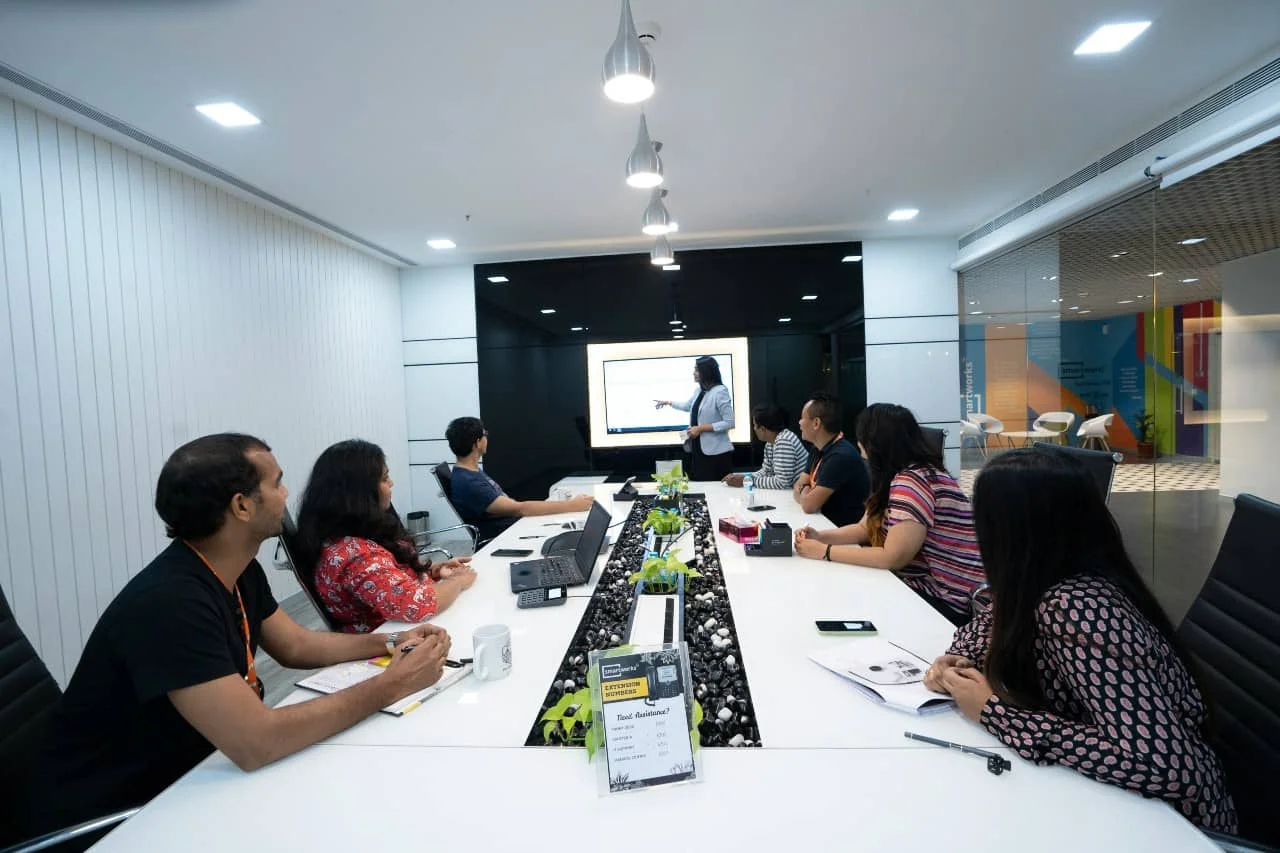How To Create A Strategic Leadership Development Plan: The Process & Template for Leaders, Teams, Companies & Individuals
Today’s business leaders are under immense pressure to deliver results but
most of the time lack the leadership skills and the organizational support to
achieve those results.
Leadership development isn’t just a way to improve business outcomes - it’s
essential for business survival such as adapting to new challenges, retaining
critical talent, and optimizing long-term business growth.
Aligning employee skills across the organization with company objectives at
multiple levels ensures that organizations are able to achieve their goals and
remain competitive in an ever-evolving landscape, and leadership development
plans are step one in the process.
Failing to invest the time, strategic insight, and resources in developing a
leadership development plan can dampen a company’s ability to ensure its
people are aligned, motivated, and prepared to succeed.

What is a Leadership Development Plan?
In its most simple form, a leadership development plan is an individualized
plan outlining leadership development objectives:
- Goals
- Reasoning
- Milestones
- Metrics if applicable
- Timing
- People involvedrsonnel
- Resources required to achieve the development goals
Ideally - yet uncommon - a leadership development plan should represent a
layered and scalable process for developing current leaders, teams, and future
leaders, and reflect each level’s specific needs, be it an individual, team,
or division/department.
Let’s say that again:
Companies Need to Develop Leadership Skills At Every Level of Their Organization
From senior leaders to mid-level leaders, to individual leaders and high
potentials, developing leadership skills at each specific level is critical.
The goal of leadership development plans vary based on their use case:
- For Individuals
- For Teams
- For Companies
Each leadership development plan should take an agile approach and reflect the
unique needs and goals of each of its specific audiences’ technical skills and
leadership abilities, whether for a singular leader or a department.
For Individuals
Leadership development training at the individual level is essential for the
personal and professional growth of individual employees.
Providing individuals with the opportunity to nurture leadership skills can
help them take on more responsibility within the organization and advance in
their careers, and can also improve job satisfaction and overall well-being,
creating a positive work environment that fosters not only professional but
personal growth.
For current and future individual leaders a leadership development plan
typically has goals focused around cultivating the skills, competencies, and
knowledge to take their careers to the next level. Leadership competencies
like:
- Influencing
- Active Listening Skills
- Strategic Thinking
- Time Management
- Developing Self-awareness
- Communication
- Problem-Solving
- Decision-Making
How to Create a Leadership Development Plan for Individuals
Individual leadership plans should be tailored uniquely to the individual and
should reflect their role, leadership development goals, how role success is
measured, current leadership skill highlights, leadership skill gaps, and how
the leader will be able to develop new skills.
Creating an individual leadership plan is a personalized process that should
involve the leader and manager discussing the leader’s goals, longer-term
aspirations, and resources available to support these goals. Specific
leadership qualities should be identified. How those will be developed and a
timeline outlined.
Pro Tip:
Every leader has their own unique set of needs and ambitions so the most
effective leadership development programs balance the individual’s needs and
goals and those of the company and provide a variety of learning experiences
and opportunities for practice and feedback.

For Teams
Leadership development plans at the team level are crucial for building
cohesive and effective units.
By providing coaching and training specifically tailored to the needs of the
team, organizations can help team members learn how to work together
effectively and help achieve shared goals with training on team-focused issues
like:
- Communication Skills
- Conflict Resolution
- Decision-making
- Team-Building
Leadership development plans for teams empower teams to create a unified
vision, enabling managers to build stronger relationships with their peers
while cultivating the potential of each individual.
How to Create a Leadership Development Plan for Teams
Team plans should be tailored uniquely to the teams and reflect their role,
leadership goals, what success is, how role success if measured, current
leadership skill highlights, leadership skill gaps, and how the leader will be
able to develop new skills.
Start by looking at team objectives. Then consider the skills and traits of
each team member. Identify team dynamics and how the team collaborates and
gets work goals achieved. Work with the team to confirm common objectives and
identify opportunities to improve alignment and collaboration. Create a plan
with the team that identifies team goals, resources to support the team’s
development, and future state for what the team will look like once the goals
are met.
Pro Tip:
Investing in team development by bringing the team together for a concentrated
amount of time to better understand each other as individuals and how to align
individual traits and skills to team and business objectives can be a powerful
leadership team development activity.

For Companies
At the company level, a leadership development plan can help to align the
organization’s goals and objectives with those of its leaders.
This is especially important for large organizations that may have multiple
departments and teams working towards different goals.
By providing coaching and training opportunities like training programs,
mentorship programs, or job shadowing that provide one-on-one guidance,
feedback, and support, companies can ensure their leaders have the skills and
knowledge needed to support the organization’s overall mission and vision with
skills like:
- Building succession plans
- Build a strong leadership pipeline
- Aligning coaching & training with organizational goals
- Promoting Diversity and Inclusion
How to Create a Leadership Development Plan for Companies
Creating a company-wide leadership development plan requires stepping back and
looking at your company’s 1-5 year goals and strategy. Looking at your goals
and strategy, identify the key goals of each division. Within your divisions
consider the key roles and what support those roles will need to be
successful.
Identify the budget that you will have available to invest in your employees.
Based on your budget you will then be able to identify the options available
to support the leadership development needs of your people. You will want to
consider what development opportunities you can create and deliver utilizing
existing resources as well as outside expertise you should bring in to help
your people.
Company-level plans should break down development needs per each division,
team, and individual. Any significant leadership delta and plan to address the
leadership opportunities at each level
Pro Tip:
Review and update your company-level leadership development plan every
quarter. Your plan should be a living document that is regularly evolving and
changing as goals are met.

What are Good Leadership Development Goals?
The primary goals to create leadership development plans include:
Improve the Skills and Abilities of Current Leaders
By honing the skills of current leaders, teams can benefit from superior
leadership capabilities and increased productivity – both crucial for driving
long-term growth and success at every level.
Align Leadership with Business Goals
Leadership development creates harmony between the needs of businesses -
objectives, priorities, company goals, etc - and personnel. Aligning personnel
and personnel abilities with company goals and priorities creates faith in the
capabilities of leaders and ensures progress toward desired outcomes.
Developing a Strong Leadership Pipeline
Proactively recognizing & developing high-potential employees and potential
leaders for leadership roles through strategic plans ensures that
organizations have access to a steady supply of qualified and capable leaders
ensuring maintain their competitive edge.
By providing teams with the necessary tools and resources for success,
organizations can unlock their teams’ full potential, elevating overall team
performance and productivity levels and moving the organization closer to
excellence.

How to Create Your Leadership Development Plan
What should a leadership development plan Include? The essential five
components of a leadership development plan whether for an individual, team or
company are:
- Create an Inventory of Your Leadership Roster
- Identify Gaps
- Take Action
- Prioritize
- Launch
Read on to learn more.
1) Create an Inventory of Your Leadership Roster
Taking inventory of your leadership roster is the first step in creating an
effective leadership development plan. Creating a comprehensive matrix of
information outlining the leadership landscape within your organization will
help you:
- Understand the Current Strengths & Weaknesses of Your Leadership Team
- Evaluate Performance
- Identify Gaps in Skills and Knowledge
- Understanding Leadership Style and Approach
- Identify Areas Where You May Need to Focus Efforts in Order to Improve Leadership Capabilities
In the comprehensive matrix make sure to outline:
Roles
Roles are an important factor to consider when evaluating leadership within an
organization because they define the responsibilities and expectations for
each leader:
- Do We Have the Right Roles?
- Is the Right Person in the Right Role?
- Does the Leader Have the Appropriate Skillset for their Role?
Tenure
Tenure is an essential component of gauging organizational leadership
capabilities, but it should not be the solitary metric by which you judge.
A more robust evaluation involves considering multiple factors like skill set,
expertise, and achievement to gain a holistic view of their aptitude for
leading.
By reviewing the performance of each leader, you can identify any areas where
there may be a need for improvement, develop a detailed plan to address those
areas, and provide any additional training, support, or coaching to help
leaders develop the skills and knowledge they need to improve their
performance in their roles.
2) Identify Gaps
After identifying and analyzing roles, tenure a performance - where are the
gaps?
Identify Existing Programs in Place That Can be Leveraged
Are there existing programs within your organization that can be leveraged to
upskill current leadership?
Or are you going to have to search for external solutions?
Identify the Resources Required to Fill Gaps & Accelerate Success
If it is determined there are not the required capabilities in-house then you
may have to rely on 3rd party solutions to upskill your leadership team’s
capabilities.
3) Take Action
After crafting a professional development plan, to ensure the success of the
initiative the appropriate assistance and resources should be presented to all
involved parties.
It is critical to put this into practice by initiating tactics that empower
leaders and optimize their performance.
The first step in turning the plan into action is to identify potential
training opportunities for existing leaders and high
4) Prioritize
In order to maximize outcomes, it is important to identify and focus on the
most pressing gaps. Keep these few key points in mind when deciding where best
to invest resources:
Impact
Consider the potential impact of the outcome of outcome that addressing a
particular gap in leadership could have on the organization.
Urgency
Consider how urgent it is to address a particular gap in leadership.
Feasibility
Consider the feasibility of addressing a particular gap. This may include
factors such as:
- The availability of resources and support
- The amount of time & effort required
- Any other constraints or challenges that may need to be taken into account
Alignment with Organizational Goals
Consider how addressing a particular gap in leadership aligns with the overall
goals and objectives of the organization.
prioritize the Focus on areas that will have the greatest impact and value for
the organization.
5) Launch
Now that you have an exhaustive understanding of where the leadership team in
your organization is at, get actionable. Implement your leadership development
plan with hard start dates, progress check dates, and end dates to see desired
outcomes in a timely manner.

What Are the Resources Available to Develop Leaders?
Mentoring, Coaching, and Leadership development programs are three different
approaches to developing leaders.
Mentoring
While Mentoring can be an effective tool for developing leaders, there are
some potential drawbacks that should be considered.
Firstly, mentoring requires a significant investment of time and resources
from both the mentor and mentee. During the mentorship process, the mentor
must dedicate their time and energy to providing guidance. It can be difficult
to expect that dedication from an unpaid mentor.
Coaching
Coaching is a more personalized and interactive approach involving working
one-on-one with a coach to identify areas for improvement and develop specific
strategies for addressing those areas.
Coaching allows for personalized plans tailored to the individual’s strengths
and weaknesses, helping leaders gain clarity about their goals, develop new
skills and strategies, explore their own potential and capabilities, and build
on the strengths of their teams.
Programs
A Leadership development program is a more structured and systematic approach
to improve leadership skills, while leadership coaching is a more personalized
and interactive way to address specific leadership challenges and improve
performance.
A leadership development program provides an effective, structured solution
that helps organizations:
- Identify areas for improvement
- Set SMART goals
- Measure the effectiveness of the program over time
- Evaluate the return on investment in terms of improved skills performance
- Evaluate the return on investment in terms of improved team performance
- Support ongoing development efforts
While all approaches can be effective in helping develop leadership
competencies, there are key differences between them.

Measurement and ROI
Measuring the success and ROI of leadership development can be a challenging
but important task.
Assessing programs’ impact is crucial to ensure ROI, to ensure organizational
leaders possess essential soft skills, and to ensure the programs are an
effective system that boosts abilities and enables companies to maximize their
potential.
Some methods for measurement include:
Self-assessment
Participants can complete a self-assessment before and after training to
assess the improvement in their soft skills.
360-degree feedback
Participants can receive constructive feedback from their colleagues,
supervisors, and subordinates on their leadership skills.
Surveys
Surveys can be conducted to gather feedback on the effectiveness of the
leadership training and the impact it has had on the participants.
Business outcomes
Improvement in business outcomes such as increased productivity, customer
satisfaction, or profitability, can be used as a measure of the success of the
training.

Conclusion
Leadership training and development is an essential aspect of an
organization’s success but companies need to do more than focus on a few
leaders at the top.
It’s essential to foster a company culture of growth and develop high
potentials at every level of the organization for maximum efficiency, taking
into account the individual, team, and company-level perspectives, allowing
leaders to craft comprehensive strategies that identify current skill sets,
address developmental needs and incorporate actionable steps for achieving
success.
Having detailed plans that outline leadership strategy, process, and goals at
each of these levels builds champions out of current employees & gives
companies an advantage over competitors when it comes to recruiting &
retaining the best talent in their industry.
With the right scope of knowledge, resources, training opportunities, and
guidance, your team can use these steps and templates to create a successful
leadership development plan that will take your organization forward now, and
into the future, and achieve massive success.













